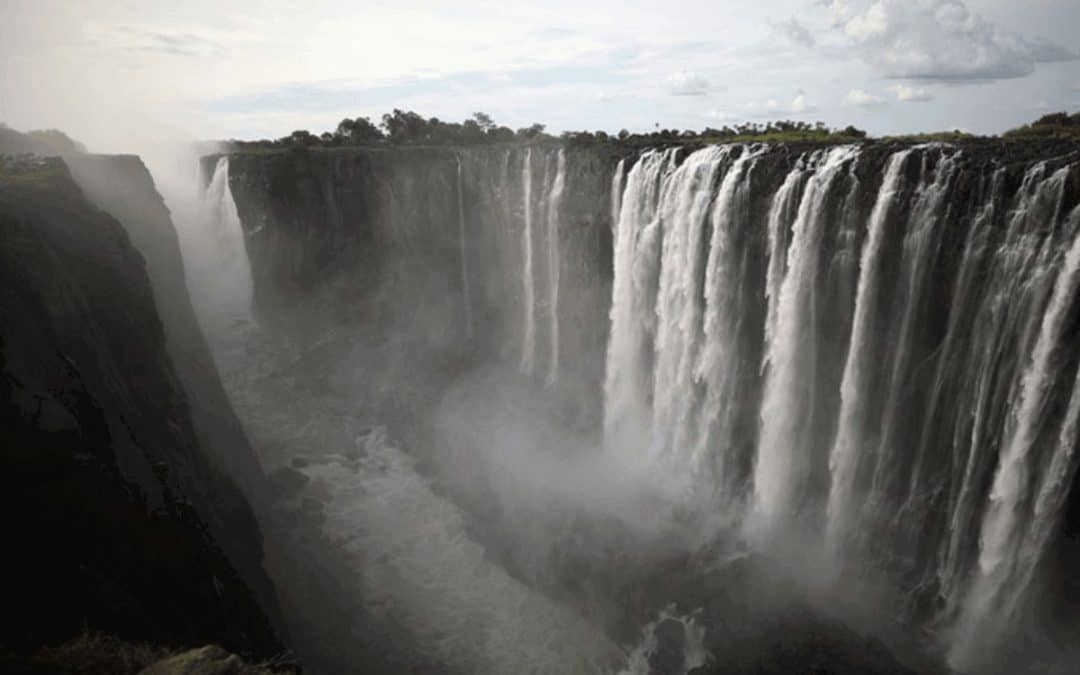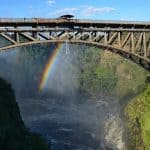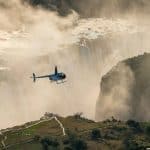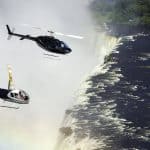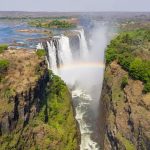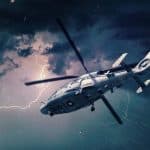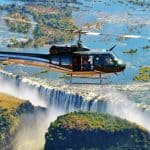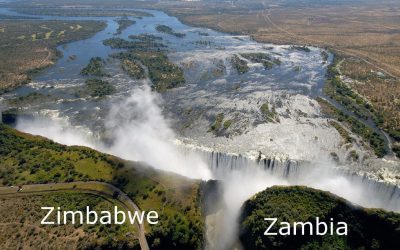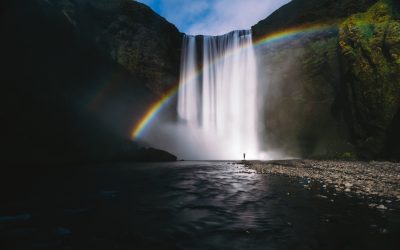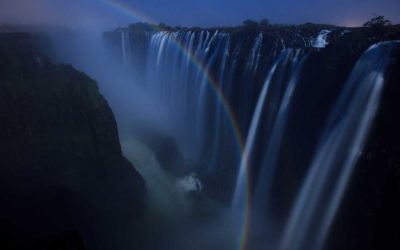Table of Contents
The Wonders of Victoria Falls
Crocodiles, Rainbow, Moonbow, and Waterfall. These are only a few of the many wonders of Victoria Falls. For more information, read this article. This article will discuss the various highlights of this magnificent waterfall.
If you are unsure of what to do or where to stay, here are some suggestions. Enjoy!
Read on for more information about Victoria Falls and its wonders!
Crocodiles
If you’re planning a visit to Victoria Falls, you’ll most likely be lucky enough to see crocodiles. This is because the Zambezi River is home to a high population of crocodiles, which range in size from newborns to eighteen-footers. Fortunately, you can go on a crocodile farm, formerly known as Spencer’s Creek Crocodile Farm, to learn more about these magnificent creatures.
The crocodile farm is situated just outside of Victoria Falls, in an area surrounded by tall trees. The farm was set up in the 1950s to protect crocodiles from hunters. The farm has a government license to collect eggs and raise three-year-old crocs, which it must return to the Zambezi river. The farm also raises lions, which are renowned for their roar.
Collin Miller was the victim of a crocodile attack in Victoria Falls. The crocodiles attacked him when he jumped into the pool. They fought over a torn-off limb. A worker and another tourist pulled him out of the pool, and he was airlifted to a hospital. He and his friend had been at Victoria Falls for a friend’s wedding.
Tourists rafting near Victoria Falls has a chance to view the famous falls and crocodiles in the area. However, crocodile attacks at Victoria Falls are rare. In fact, in recent years, a British backpacker was almost killed by a 10-foot crocodile. He managed to free himself after the crocodile bit his leg, but her friend had to repeatedly hit the crocodile with his foot in order to get her to let go. She had to be airlifted to Lusaka for surgery.
Rainbows
If you want to take a photo of the iconic Rainbow at Victoria Falls, you must be lucky enough to see it during a full moon. The full moon reflects raindrops in the falls in a way that creates a stunning rainbow arc. Since moonlight is much fainter than sunlight, the rainbow is not nearly as vibrant. The Victoria Falls lunar rainbow appears on three specific days during the full moon when the water level is at its highest. The best time to view this phenomenon is between June and August when the moon is high in the sky but not obscured by clouds.
The best time to see this natural phenomenon is in the evening when the Victoria Falls gates are opened until midnight. During the night, the mist from the falls creates a moonbow, which is much fainter than the rainbow seen during daytime. This phenomenon is unique to Victoria Falls and one of only a few places on earth where moonlight can create such a phenomenon. In addition to being a stunning nighttime view, the Victoria Falls gates are open only during the full moon, so plan your visit accordingly.
The beauty of the waterfalls is beyond description. The thundering water that falls from the sky is so powerful that a rainbow can be formed in its spray. The Victoria Falls, also known as Mosi-oa-Tunya, is a truly awe-inspiring sight. The rainbow that appears at Victoria Falls is actually formed by the reflection of the moonlight on the water. The rainbow is created as the water reflects the light of the moon and refracts it, creating an extraordinary lunar rainbow.
Moonbow
If you’re planning a trip to Zambia, the best time to view the Moonbow at Victoria Falls is near a full moon. The full moon is also the best time to view the Victoria Falls moonbow because the rising spray obliterates the surrounding sky and blocks out the moonlight. If you’re trying to watch the Moonbow at Victoria Falls on a clear night, make sure to visit between February and July, when high water levels are at their highest. Then, go back to the falls in early December, when spray has dwindled.
During the high water season in the Zambezi River, Victoria Falls’ lunar rainbow occurs most frequently during the full moon. It’s best to visit the waterfall on a clear, cloudless night when the moon’s light shines brightly. However, if you can’t wait until the full moon to view the Moonbow, you can visit the park after a full moon to photograph the beautiful display. To capture this amazing sight, make sure to use a long-exposure photo to capture the natural phenomenon.
The Moonbow can be viewed in two parts – the Lower Overlook and the Upper Overlook. Generally, you can see the Moonbow in the lower part of the falls during the winter, while on the upper side, it’s usually visible until 11pm. In addition, you can expect a Moonbow on December 31st, if the full moon is out. So, whether you’re visiting Victoria Falls during the winter or in the summer, be sure to take your camera with you.
The Waterfall
Victoria Falls is one of the most popular tourist destinations in Zimbabwe and Zambia. This natural wonder is a massive sheet of falling water that is 350 feet deep and 5000 feet wide. In addition to the sheer force of the water, the falls are home to more than 200 different plant and bird species. Because of their popularity, the Falls have been a sought after tourist destination for centuries. Read on to learn more about why the Victoria Falls is so famous.
The falls are so large that their spray is so high that you can see it from up to 48 kilometers away. Tourists can also enjoy a variety of adrenaline-filled activities in the area. Bungee jump between two countries, white-water raft down grade five rapids, walk among rhinos, and take an exciting microlight or helicopter ride above the falls. If you are planning a trip to Victoria Falls, be sure to check out our tours!
Although the waterfall is not the largest or tallest waterfall, it is the largest curtain of falling water on earth. This natural wonder is 1.5 times wider than the Niagra Falls and double the height. There are numerous wildlife species that live in the rainforest surrounding the falls, which is the only place on earth where it rains day and night. The constant water vapour rising from the falls is responsible for creating this unique ecosystem. For this reason, visitors to Victoria Falls must be prepared to get wet.
Rainforest
If you are visiting Zimbabwe, you must not miss the Rainforest at Victoria Falls. This lush ecosystem is the only place on Earth where it rains every day. It is an enchanting place to explore the fresh growth of trees and other wildlife. The Rainforest is also home to many species of birds of prey including vultures and chimpanzees. In addition to these, you should not miss the opportunity to see the Falls from a helicopter.
The sheer force of the water hurls a column of spray up into the air and drenches the edge of the waterfall in a fine mist. This is the reason the waterfall received its traditional name Mosi-oa Tunya. If you happen to visit the Falls during a full moon, you can also experience a lunar rainbow, which is a beautiful natural phenomenon.
The Rainforest at Victoria Falls is a highly fragile ecosystem, composed of discontinuous forests on sandy alluvium. It depends on abundant water and high humidity to sustain life. It has been said that the spray plume can reach up to 500 m in height, which is visible from distances of between fifty and thirty kilometres from the Bulawayo road. During high water, the spray at Victoria Falls can be quite intense, especially on the eastern side of the Falls.
Victoria Falls Location
When David Livingstone first saw the Falls, they were known as Mosi-oa-Tunya. The waterfall was formed about 150-200 million years ago, during the Jurassic Period, when the earth was a very different place than it is today. A lot of basalts was deposited in southern Africa during this time. Cracks appeared in the hard crust, and softer materials filled the spaces. These softer materials eventually eroded the basalt to form the Victoria Falls.
Before the 19th century, Victoria Falls was known by some European geographers. Scottish missionary David Livingstone first identified the falls in 1855 and named them after Queen Victoria. Since then, the falls have become a major tourist attraction and have attracted many tourists from all over the world. However, climate change is expected to alter the current character of the falls. As a result, it is important to understand the history and nature of the waterfalls to protect them for future generations.
The weather at Victoria Falls is surprisingly mild, despite its location at about 900 meters above sea level. Summer temperatures can rise to over 40 degrees, but the humidity is low. You should expect a slightly cooler day in September and a humid night in October. However, be prepared for the rainy season and be aware that temperatures can drop below freezing in November and December. The weather at Victoria Falls is always changing, so check the weather before you visit.

